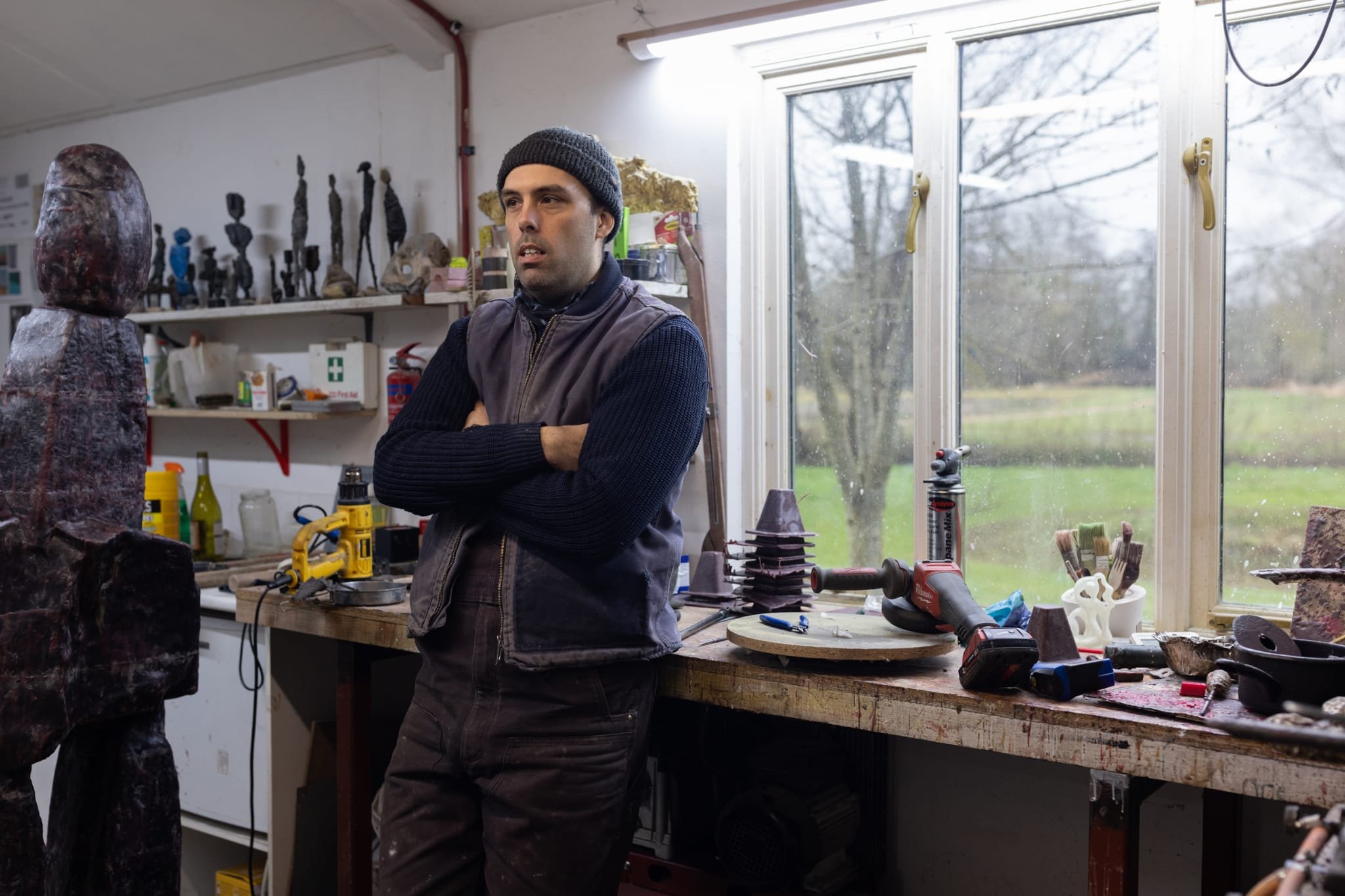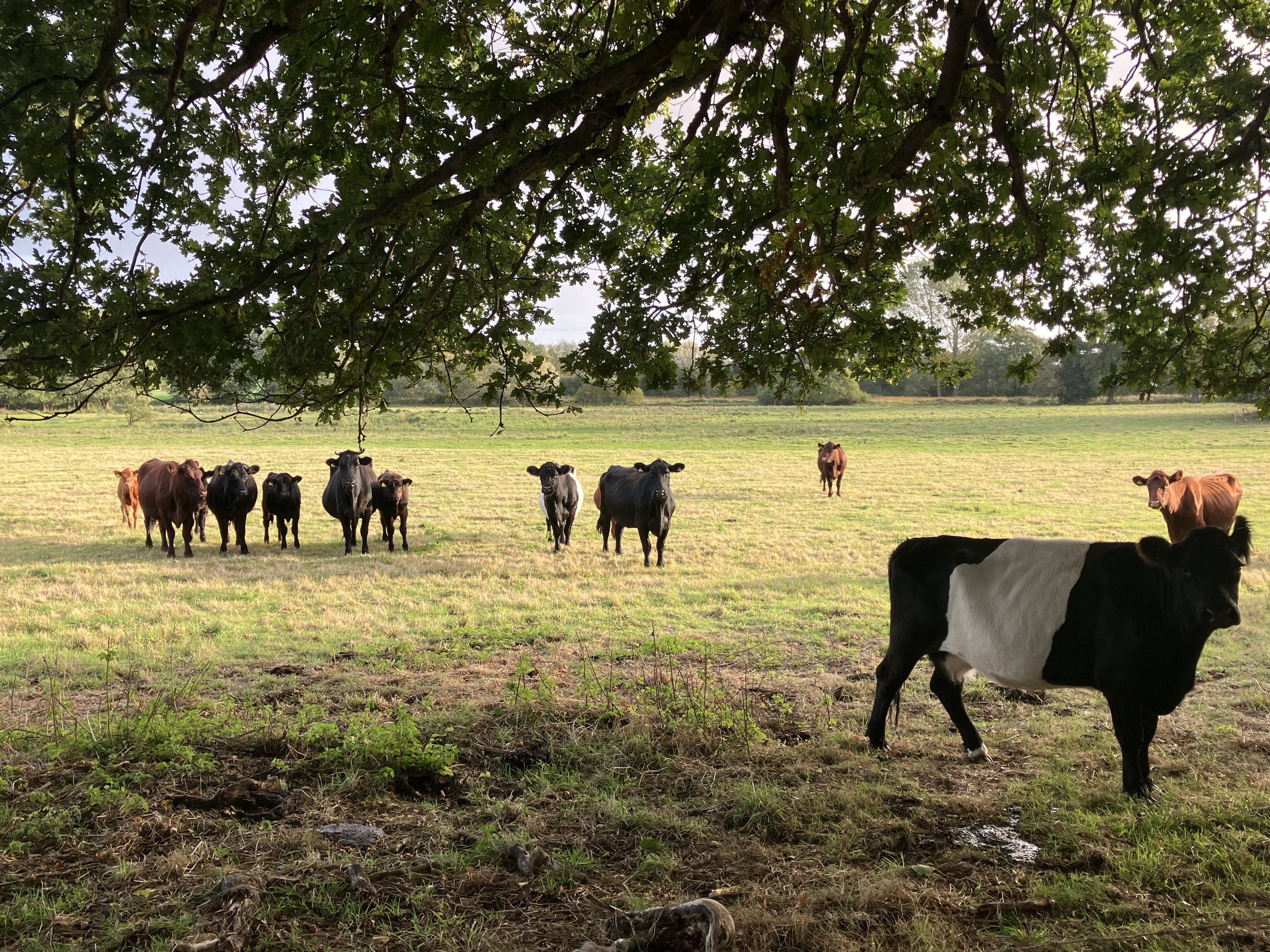Essay: Mitigation Benhall fen
Our contemporary understanding of conservation and habitat creation demands a profound re-evaluation. We stand at a critical juncture, faced with the urgent need to bridge the chasm between the environment we are accustomed to seeing and the often damaging reality of modern land use. The path forward is not about brute force or utilitarianism, but about intelligently weaving together necessary infrastructure with effective habitat generation, moving beyond mere mitigation to true ecological integration.
Gus Farnes in studio, rant mode initiated. Photo by Richard Allenby-Pratt @thesuffolkproject
Consider the stark contrast between the transformative wetlands created around the Olympic Park in Hackney and the perceived tragedy of imposing a similar "mode of thinking and process" on Suffolk’s cherished environment. The Olympic Park project, born from de-industrialization, represents a powerful act of revitalisation, a deliberate greening of a formerly blighted urban landscape. Yet, the notion that such an approach can be universally applied as "mitigation" for habitat loss elsewhere highlights a fundamental flaw in our current conservation strategies. The British countryside, a source of national pride and reverence, possesses a unique character and ecological integrity that cannot simply be replicated or substituted. To suggest that the destruction of one habitat can be "offset" by creating another, often far removed, is to misunderstand the very essence of place. Indeed, the concept of offsite mitigation, often driven by expediency and efficiency, should be outright banned, as it perpetuates the harmful illusion that environmental damage can be neatly balanced with artificial creation.
Historically, there was a greater care, a more profound sense of exchange, in how we interacted with the land. The "old ways" were marked by a harmony between environment and infrastructure, a "quid pro quo" approach that left "no trace" despite requiring ongoing engagement. Imagine a channel cut for drainage filled with branches and backfilled, a temporary yet ecologically sound solution, compared to the permanent, often scarring, insertion of a plastic drainage pipe. While the latter might offer immediate efficiency and little maintenance, it lacks the thoughtfulness, the "apologetic" quality, that characterised older methods. This isn't a call for a sentimental, "Mrs. Tiggy-Winkle twee" aesthetic, but rather an insistence on greater care and consideration. Once the intrinsic value of a landscape is gone, it is truly gone.
This decline in thoughtful integration is particularly evident in modern civil engineering. Victorian installations like Tower Bridge are admired for their iconic status and detailed design. Yet, one struggles to imagine history reflecting kindly on our contemporary infrastructure, exemplified by the stark contrast of the modern motorway bridge. Modern civil engineers, it seems, often prioritise pure functionality over aesthetic or ecological harmony. The result is a new landscape that is a poor apology for the old, often amounting to sheer landscape mutilation.
Take, for instance, the east Suffolk coastline, with its charming "spaghetti network of roads and paths dictated by estuary and wetland." This intricate tapestry of human activity and natural topography fosters a sense of "childish enquiry," restricting the point of view and ensuring that "every journey is a discovery." This organic, evolving landscape, shaped by millennia of human interaction, is precisely what makes it so captivating. Yet, the "romanising," the "ironing," and the "straightening out" of this natural network through modern development threatens to create a very dull environment to exist in. We are, in a sense, like outliers of the Boudican revolt still resisting Suetonius, fighting against a homogenising force that strips away the unique charm and ecological richness of our surroundings.
My connection to the land is rooted in the fact that I live in the place I grew up I am connected to the soil. This connection extends beyond the curtilage of my home, being interested in how human activity has left its mark on land over millennia, everywhere I go, I seek traces, and examples of our impression – from the imagined marks left by John Clare and the ploughmen before him, to the subtle undulations of ancient trackways. This is not a detached, "top trump knowledgist" approach to natural history, but rather a passion for the stories embedded within the landscape. I am a naturalist, not in the sense of meticulously identifying every flora and fauna, but in my profound connection to the historical and ecological narrative of a place.
Benhall Fen drainage. Photo by Richard Allenby-Pratt @thesuffolkproject
I am all for progression, but it must be more intelligent. The advancements in mechanisation, materials, and manufacturing should not be used for brute force, but for a more discerning, even "apologetic," approach to altering the environment. Why cut a channel, dump an eight-foot plastic pipe, lay a membrane, and then five tonnes of schist, when we could ask ourselves: how would we approach this if all we had to work with was what's there? This question, echoing the principles of "food miles," extends to "material miles" and "biosecurity," urging us to consider the full ecological footprint of our interventions. The archaeological record of our times will likely be confusing at best, huge deposits of materials transported globally punctuated by dated packets of convenience food found in layers, a stark contrast to the enduring and often harmonious traces left by those who came before us.
It is possible to use, change, and even abuse the environment, but to do so in a way that demonstrates care and consideration. Our challenge is to realign our contemporary understanding of conservation and habitat creation, moving away from a purely utilitarian mindset towards one that values harmony, beauty, and the enduring character of our landscapes. The new landscape we are forging must not be a poor apology for the old, but a testament to our intelligence, our respect, and our enduring connection to the natural world.
When mitigating the impact of large-scale infrastructure projects, it is imperative that newly created or enhanced habitats not only serve as ecologically sound environments for wildlife but also facilitate meaningful interaction between people and nature. Successful mitigation strategies extend beyond mere biodiversity offsets to actively foster a symbiotic relationship between human communities and the natural world. This includes creating accessible spaces that reconnect residents with local ecosystems, establishing community-focused initiatives that could exist as orchards and shared woodlands, and integrating nature-enhancing features directly into community life through funds for products like bat and bird boxes. By designing habitats that are both robust for flora and fauna and inviting for human engagement, infrastructure projects can transform potential ecological disruption into opportunities for holistic environmental enrichment, ensuring long-term benefits for both biodiversity and community well-being.






